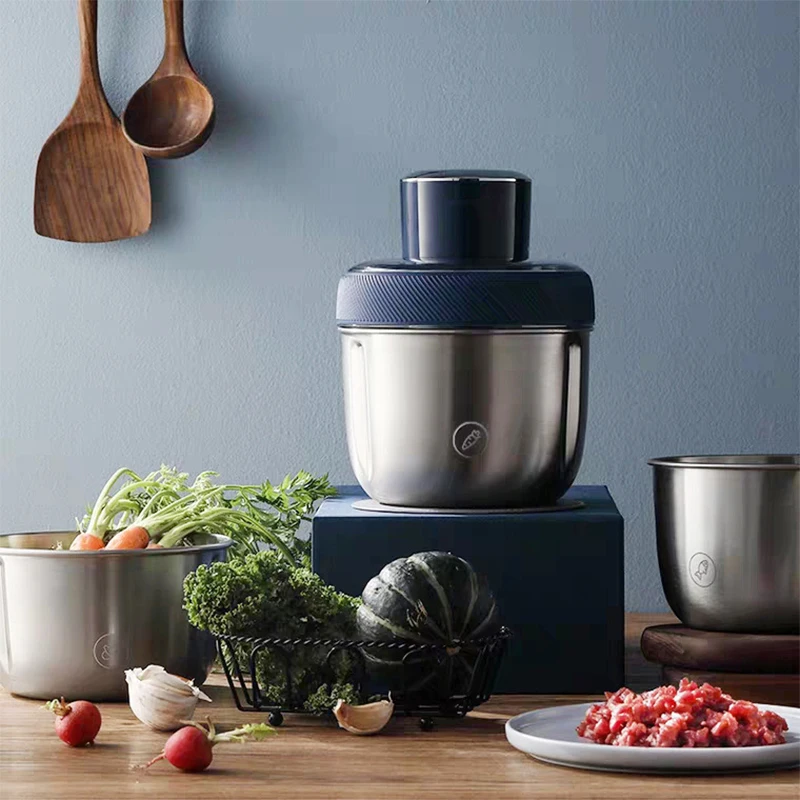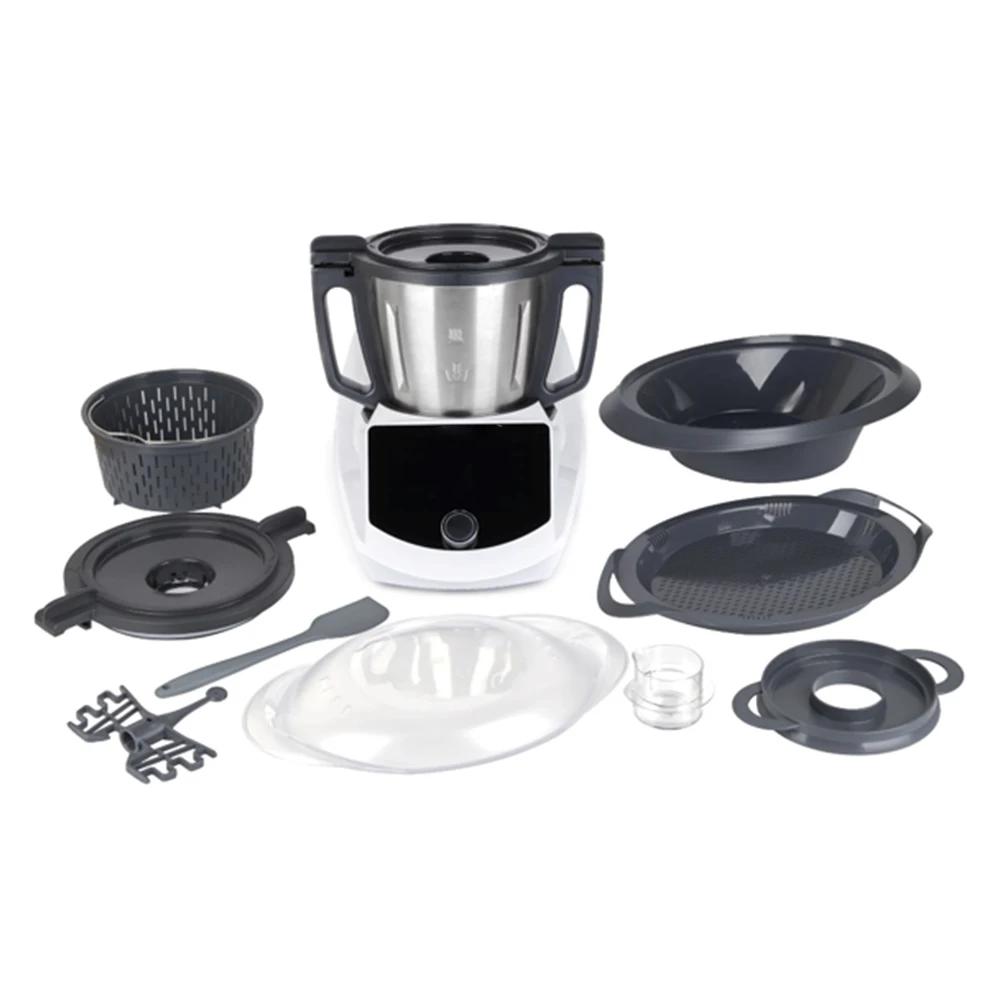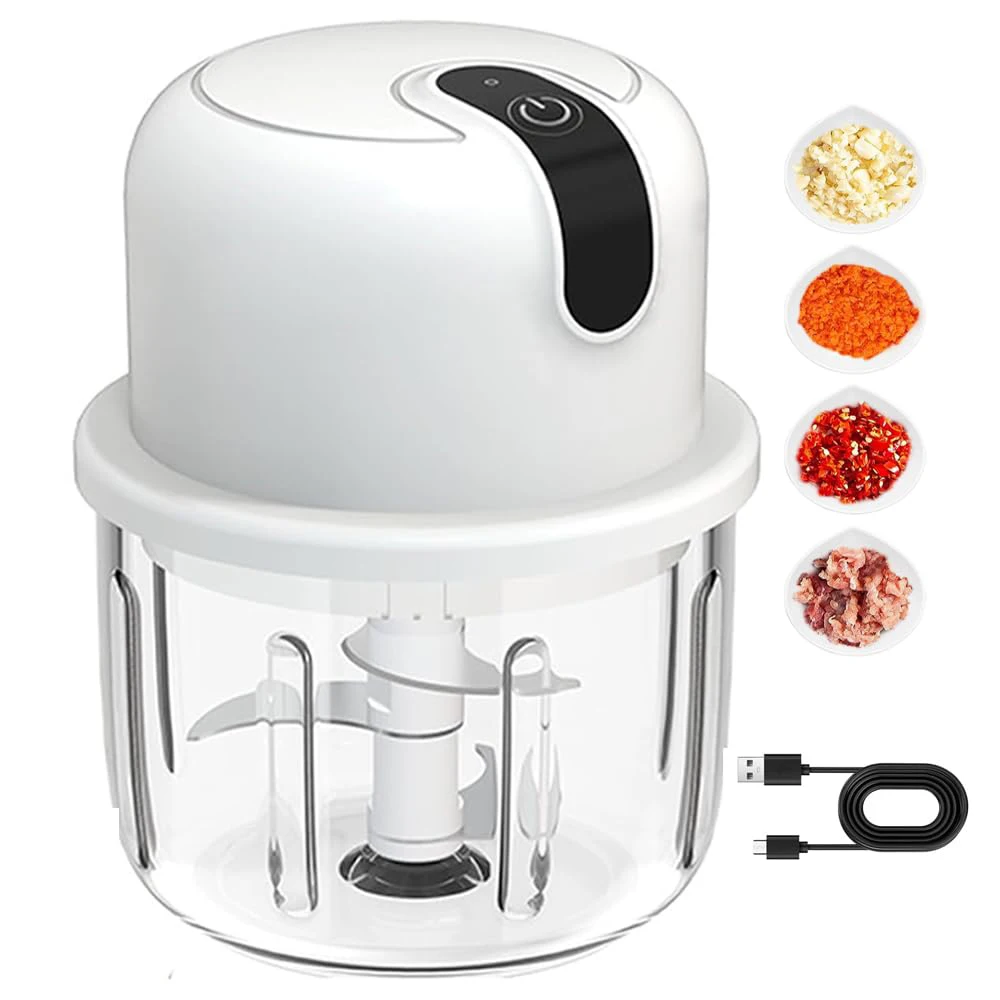
Key Features of a Food Processor
Understanding the key features of a food processor can enhance your cooking efficiency immensely. Here’s what sets it apart:

Basic Components and Attachments
Every food processor comes with a basic set-up which typically includes a bowl, sharp blades, a lid, and a base with a motor. The blades are pivotal, adept at swift cutting tasks. Attachments extend functionality, allowing you to slice, dice, shred, and even knead dough. Some models come with additional attachments like juicers or dough blades, making them highly versatile tools in your culinary arsenal.
Cutting Power and Versatility
Food processors boast powerful motors that provide high-speed cutting action, perfect for handling tough chopping and grinding tasks. This allows them to tackle a range of ingredients, from hard cheeses to nuts and fibrous vegetables. Their ability to quickly switch between tasks—thanks to interchangeable blades and settings—underscores their versatility, making them an essential tool for both simple and complex cooking endeavors. Whether you’re prepping ingredients for a meal or making a pie crust, a food processor can handle it efficiently with precision.
Essential Functions of a Food Processor
A food processor is a game changer for any kitchen, simplifying and speeding up a range of cooking tasks.
Chopping Vegetables and Nuts
Chopping veggies and nuts by hand can take time and skill. The food processor does this in seconds. With its sharp blades, it processes hard and soft foods alike. It is perfect for salads, stir-fries or toppings.
Making Doughs and Batters
Mixing dough for bread, pizza, or pastries often requires effort. Food processors whip up doughs evenly with little fuss. Using a food processor for batters makes for quick and easy pancakes, cakes or muffins.
Preparing Breadcrumbs and Crusts
For recipes needing breadcrumbs, a food processor turns stale bread into fine or coarse crumbs. It also crushes graham crackers for pie crusts, saving time and mess. Cheesecake bases or breaded coatings are made in minutes.
Creative Uses in the Kitchen
The food processor is like a culinary wizard, capable of transforming ingredients in ways that can refresh your cooking routine. Below, explore some inventive uses that may inspire your next kitchen adventure.
Creating Textured Dips and Sauces
Don’t just stop at chopping; your food processor can blend dips and sauces with a pleasant, chunky texture. For example, use the pulse feature to make pesto, salsa, or romesco that have identifiable bits of herbs, nuts, or veggies. It’s perfect for those who favor dips with character over perfectly smooth spreads.
Homemade Nut Butters and Energy Balls
Make your own nut butters at home with a food processor. Just process nuts until they turn creamy. For a quick, nutritious snack, combine dates, nuts, and oats to form energy balls. These treats are not only wholesome but also cost-effective, as you bypass store-bought versions.
Pureeing Fruits for Desserts
A food processor lets you puree fruits effortlessly, ideal for desserts like mousse or to top off pancakes and crepes. It’s a simple way to create fruit-based sauces, jams, or flavor bases for sorbets and ice creams, harnessing the natural sweetness of fruit without additives.
 Food Processor vs. Other Kitchen Tools
Food Processor vs. Other Kitchen Tools
Choosing between a food processor and other kitchen gadgets can sometimes be confusing. It’s crucial to understand their differences and identify the specific tasks each is best suited for.
Comparison with Blenders
When considering a food processor vs a blender, the main difference lies in texture and liquid content. Blenders excel with smooth purées and liquid-based recipes like smoothies or soups. They need enough liquid to function properly. Food processors handle less liquid and more solid foods better. They’re great for chopping nuts, making dough, and slicing vegetables. A food processor can produce finely chopped ingredients or a rough chop, while a blender aims for a smooth consistency.
When to Use a Food Processor Over Other Tools
Use a food processor when you need to chop, shred, slice, or knead. It’s perfect for making pastry dough or grating cheese quickly. For tasks that require precision, like creating uniform slices, a food processor is ideal. It’s also your go-to for recipes that need solid ingredients mixed or chopped, not liquified. Think of salsas, chunky dips, or shredded veggies for slaw. A food processor is versatile and can handle many tasks that would be more cumbersome or time-consuming by hand.
Tips for Efficient Food Processor Use
To get the most out of your food processor, proper use and care are crucial. Below are some actionable tips that can help you use your food processor more efficiently.
Preparing Ingredients Properly
Prepare your ingredients to ensure optimal results and safety. Here’s how:
- Chop food into uniform sizes before processing. This promotes even chopping.
- Avoid overfilling the processor. Fill only to the recommended level for best results.
- Use the pulse button for more control over texture, especially for coarse chops.
- Ensure lids and blades are secure before turning the machine on to prevent accidents.
Maintenance and Cleaning
Keep your food processor in top shape with these maintenance tips:
- Clean after every use. Disassemble removable parts and wash them thoroughly.
- Dry parts completely before reassembling to prevent bacteria growth.
- Sharpen blades regularly to maintain cutting efficiency. Refer to the manual for specific instructions.
- Store in a dry, cool place to prevent motor damage and extend lifespan.
Following these guidelines will help you maintain your food processor and enhance your cooking experience.
 Choosing the Right Food Processor
Choosing the Right Food Processor
When shopping for a food processor, size and capacity should top your list of considerations. The size of your kitchen and the volume of food you typically prepare will inform your choice. A small model suffices for occasional, basic tasks or for smaller kitchens. A larger, more robust machine is better if you cook often, or in large batches.
Considering Size and Capacity
A compact mini food processor is great for small tasks and limited spaces. Look for sizes around 3-4 cups if you’ll do mainly small jobs like chopping herbs or making sauces. Going upwards, a mid-size food processor, around 7-9 cups, serves well for regular use on various tasks. The 14-cup models are suited for those who cook frequently or need to process large quantities. It can handle bigger jobs like making doughs or chopping large vegetables.
Choose a machine that won’t overburden your counter space. If storage space is tight, prioritize a design that’s easy to store. Assess how you cook and the volume of food to decide the right size for you.
Assessing Necessary Attachments and Features
Consider what you want to use your food processor for. Basic attachments usually include an S-blade for chopping and pureeing, and slicing or shredding discs. However, you might want additional features like a dough blade or a dicing kit for more specialized tasks.
Think of your cooking habits. If you often make bread, a model with a dough blade is a must. If you regularly prepare dishes requiring precise cuts, look for a processor with multiple disc options. For multitaskers, a food processor that boasts a wide range of attachments provides versatility.
Avoid extra features you won’t use; they add to the cost and require storage. Also, consider the ease of swapping these attachments and cleaning. Features like dishwasher-safe parts or easy assembly can save time and hassle. Remember, the best food processor fits your cooking style and simplifies your culinary tasks.





